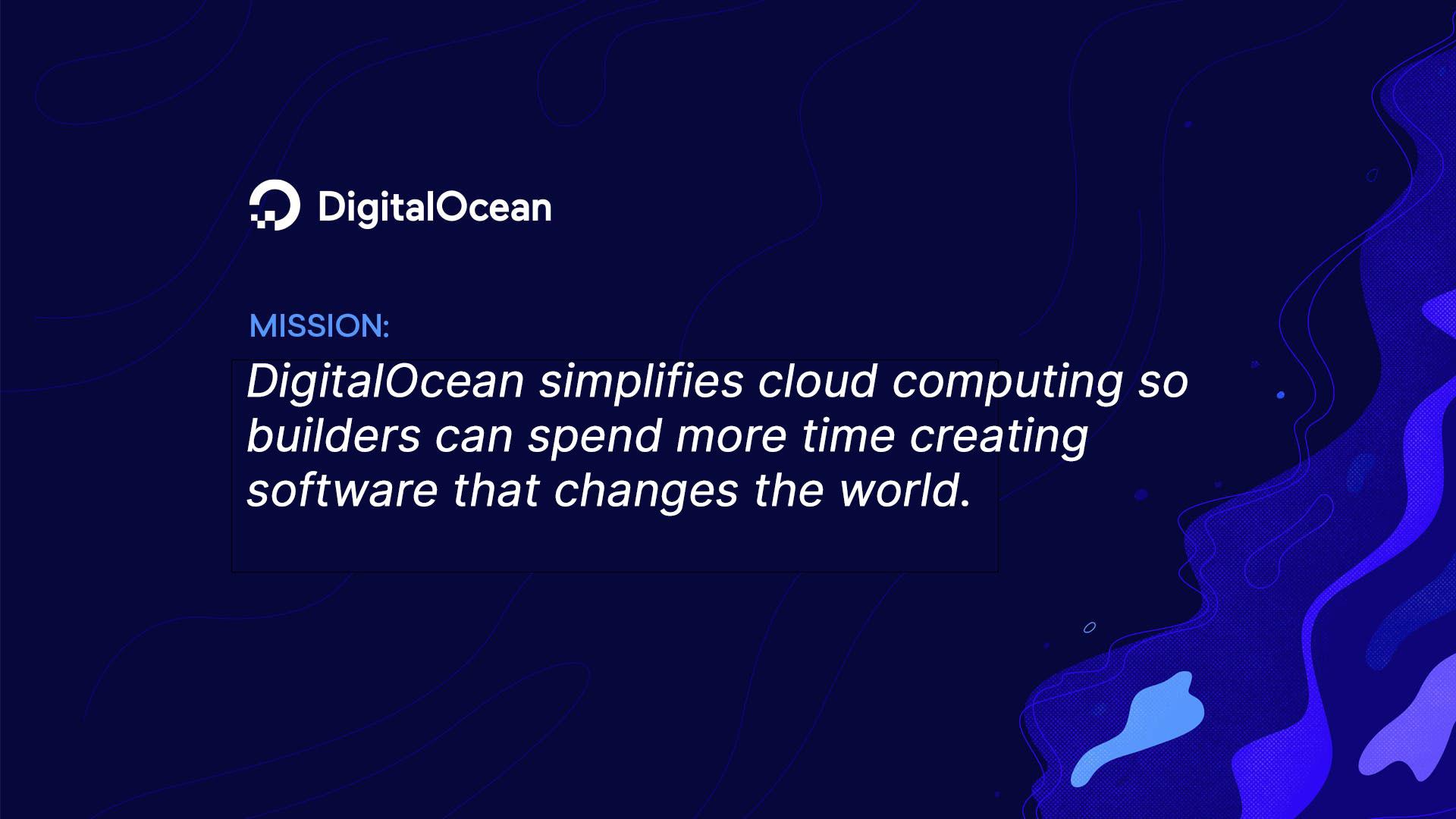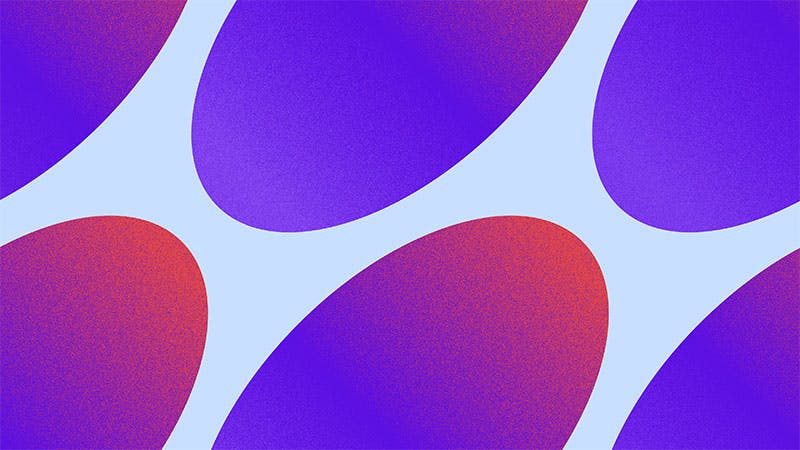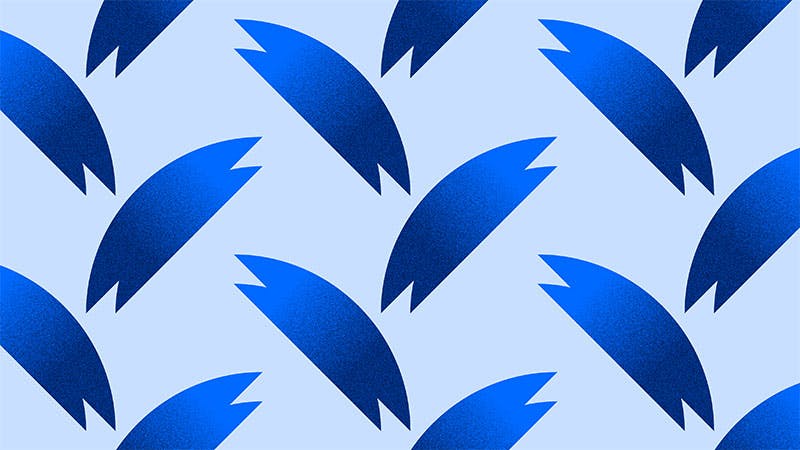As a company, we’ve always cared about contributing to developer culture in an authentic way, and one of the ways we do that is by adding moments of visual delight to everything we do, whether it’s a Community tutorial, an interaction in the control panel, or a T-shirt at a conference. That is why, from the very beginning, DigitalOcean put an emphasis on building out a Brand Design team comprised of not just proficient graphic designers, but brilliant illustrators as well.
The Brand Designers at DigitalOcean are challenged every single day to transform extremely technical and esoteric content into approachable and friendly touch points. Lead Visual Designer Masami Kubo says, “We believe these technologies should be accessible to everyone, and a part of that is acknowledging and celebrating the diverse and quirky personality behind the humans that build these amazing things. Visuals and branding throughout the cloud computing industry are often disregarded or unconsidered, so it’s a unique opportunity for us as designers to bring that culture to life.”
We interviewed DO’s Brand (Visual) Designers Kasia Bojanowska, Masami Kubo, Pat Raubo, and Alex Mostov to learn more about their design process, how they illustrate technical concepts, and where they turn to for inspiration.
How do you approach technical topics as illustrators?
Masami: We’ve been illustrating technical topics for years, so the challenge now is how to keep it fresh and relevant. However, if we push the imagery too conceptual or meta, we run the risk of none of it making any sense to our audience. My approach now is to identify the primary action or message behind complex concepts, and focus on making that one thing really clear. I like to start minimal, then add elements sparingly to not distract from the primary message.
Alex: I came to the DigitalOcean team without much technical knowledge. In some ways I think this has actually been an advantage in creating conceptual illustrations. I create images that help me understand the concepts. I think and hope that inherently makes them more intuitive to others, too.
Where do you draw inspiration from for your designs?
Kasia: When starting a new project I definitely try to spend a good chunk of time looking for inspirations. Google image search, Pinterest, Dribbble, Behance are all wonderful resources for that. We have a few shared pinterest boards with stuff we like. I also get really inspired when I see great work being made by others on our team.
Pat: One of the benefits of working with a team of such enormously talented designers is that I draw inspiration from them and their work all the time. Masami and Kasia both do amazing work, and I’ve learned a great deal from both of them, as well as from Alex. I try to seek out inspiration from a number of things. Some have a pretty clear association with the kind of work we do at DO, like design and illustration done specifically for tech, but I also draw from editorial illustration, film, comics, and book covers, among other sources.
Illustrations by Kasia Bojanowska, Patricia Raubo, & Alex Mostov

How do you come up with new ideas for similar technical topics?
Masami: I think it actually helps for imagery with similar technical topics to have a common thread of imagery, so as to build a visual association. We have strict style guides for most of our platforms and campaigns, but some of these style guides allow for permutation in aesthetics to avoid looking too repetitive over time.
Pat: I like to first do some research to understand the basic concept of what I’m going to illustrate, and then add to my notes with simple schematics and/or sketches to see if there’s anything I can pull from those for the final visuals.
Alex: I will often try to think about representing a topic in a different kind of space or world. For examples if I create an image for a topic in a 2D space, the next time I will try to figure out how I could represent that same concept in a 3D space or from a different perspective.
What is one of your favorite projects you’ve worked on at DO thus far?
Pat: I worked on a series of illustrations for our Employee Handbook, which meant drawing a team of cute sea creatures in an office setting. I really enjoyed working on that project, and it was great to see people respond to the illustrations in such a positive way.
Masami: My favorite projects are often also the most challenging ones. And usually the more ambitious they are, the more compromises on vision I’ve had to make. But some of the most exciting stuff I’ve worked on here is the art direction and design of our office spaces, in collaboration with architects, fabricators, and our People team. I was expected to transform the space into a branded and navigable experience. It’s still a work in progress, but I love the challenge of designing for physical spaces.
Murals by Alex Mostov & Masami Kubo

What was one of the most challenging projects you’ve worked on at DO?
Kasia: Redesigning the DO logo was definitely the biggest challenge for me. The process was pretty high pressure but I was allowed enough time to really let myself explore and dig in deep. In this case having a supportive team to brainstorm and keep motivation high through all of the iterations was essential.
Masami: We did a design refresh of the marketing site a year ago, and it went through a lot of changes and push backs. The task was simple—refresh the designs and clean up the performance—but it involved approval from every department and stakeholder in the company. I was doing everything from art direction, web design layouts, and spot illustration. I learned a ton about project management and designing within web accessibility standards, thanks to Una Kravets. I felt creatively drained after the project was finished, and didn’t think it would be possible to revisit it with new ideas. Surprisingly, I am now leading a complete design overhaul for the marketing site, and I feel more equipped than ever to tackle all the challenges and make something more beautiful and smart than last year.

Sometimes you create visual assets that are targeted at a very specific audience, and you have to balance things like humor with cultural sensitivities. How does localization factor into your designs?
Masami: Part of our job is being aware and sensitive to any imagery that might have harmful or negative impacts to our community. We are fortunate to have a diverse employee base that cares about these things, so the more opinions we can gather, the better. We try to treat branding the same in any other countries as we do here. However, we do want to highlight our growing global coverage, so one way we approach this is to celebrate the unique design culture local to these countries. For example, the Frankfurt datacenter launch campaign featured designs inspired by Bauhaus Constructivist design. For the Bangalore datacenter launch, we created stylized renditions of local architecture. Being a developer from another country doesn’t necessarily mean you have vastly different tastes or interests, so it’s important for companies and designers to address these things authentically.
How do you create different kinds of content while maintaining brand consistency?
Kasia: For illustrations, we keep a consistent color palette. We have a list of prompts to help us throughout the process, but we do not have a very strict style guide when it comes to editorial illustration. We tend to have more fun and variation with all of our community and conference designs. However, we are definitely more strict about stylistic consistency when it comes to our website design.
Like much of DO, the Brand Design team is distributed across the world. What systems or processes do you have in place that allow for open communication and collaboration?
Pat: One of our team members, Kasia, is based in Poland, so we have a time difference of six hours between us. We started to make a habit of doing our daily stand ups and critiques early in the day to make sure we were all able to benefit from them. We have a private Slack channel which we use to stay in contact, to brainstorm, and to share ideas on projects.
Where do you see the DO brand going?
Masami: When I first joined DigitalOcean in 2014, the company was breaking into the cloud computing world by differentiating itself as friendly and accessible. At the time that meant being extra illustrative and bubbly with our designs. We wanted to let the developer community know that their content and culture deserves this kind of attention. That attitude and core value is still what drives every decision, but our aesthetics have matured and evolved just as our products and features have grown. The brand now has a diverse voice ranging from playful and young to mature and sophisticated, all under the same goal of enabling the developer community. I think this range directly reflects the diversity of users we want to speak to.
Alex: I really like DO’s brand evolution because I feel like the changes are made based on need and effectiveness rather than just trying to make a splash. I think the brand will continue to change in this deliberate way as the community and product develop. I also hope it will always maintain the sense of playfulness that I think makes DO special.
What is your best advice for designers just starting out?
Pat: I would encourage aspiring creative folks of any stripe to always stay curious (as cliched as it may sound, it’s advice I’ve followed that I feel has served me well) and seek out inspiration from a range of sources (museums, books, online communities, whatever floats your boat!), because you never know what’s going to be the seed that becomes the root of a fantastic idea. Feeding your mind will give you perspective and enrich your work.
That said, don’t wait around for inspiration to strike, either! It’s best not to be too precious about your work. Just sit down, make the thing, and make it to suit your standards. Then, when you think it’s done, work on it just a little bit more. Keep learning, and push yourself a bit more with each new project.
Do you enjoy our designers’ creations? Download desktop wallpapers from some of their favorite illustrations.



